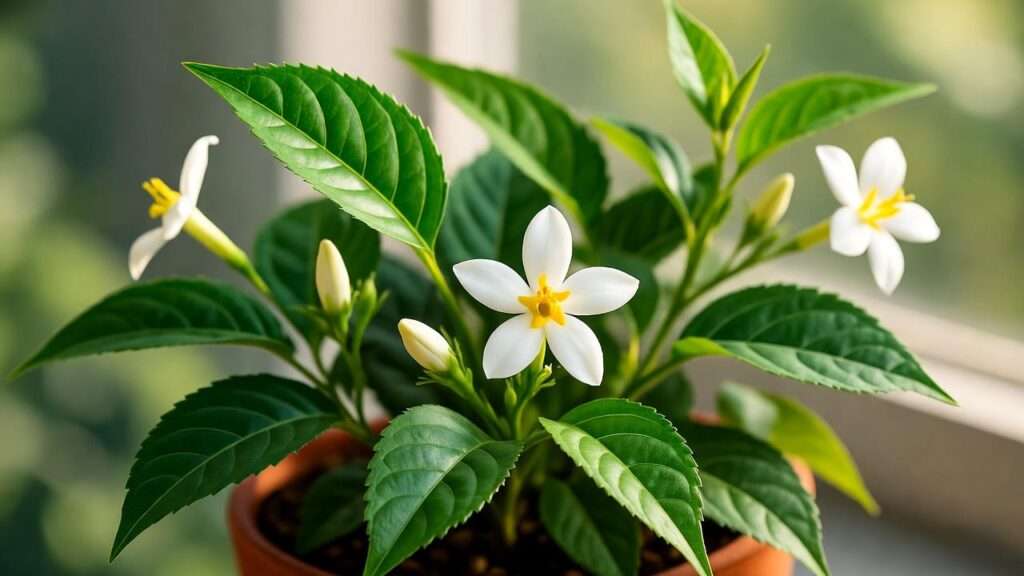Imagine stepping into your garden or sunny living room and being instantly enveloped by a heady, sweet perfume that is both exotic and deeply comforting. This is the magic of the Sambac Jasmine Plant, an evergreen shrub whose fragrance is unrivaled in the botanical world. Known across Asia as Mogra or Arabian Jasmine, these white, star-shaped flowers are not just beautiful; they are a global cultural treasure, prized as the core ingredient in jasmine tea, high-end perfumes, and traditional celebratory garlands.
While many gardeners successfully keep their Sambac Jasmine alive, achieving the truly abundant, non-stop, highly fragrant blooms the plant is capable of requires moving beyond basic gardening and adopting specific, expert care strategies. If you’ve been frustrated by a lush, green plant that refuses to flower, or whose blossoms lack that signature scent intensity, you’ve come to the right place. We will reveal the fundamental secrets—the light-water-fertilizer trilogy—that transforms a struggling bush into a blooming powerhouse, ensuring your Sambac Jasmine Plant thrives as a centerpiece of fragrance.
1. Getting to Know Your Sambac Jasmine Plant (A Botanical Deep Dive) 🌿
Before you can successfully optimize your plant’s environment, you must understand its identity and natural inclinations. The key to abundant flowering lies in recognizing that the Sambac Jasmine is a tropical sun-worshipper. By understanding its botanical needs, you set the foundation for E-E-A-T-level care.
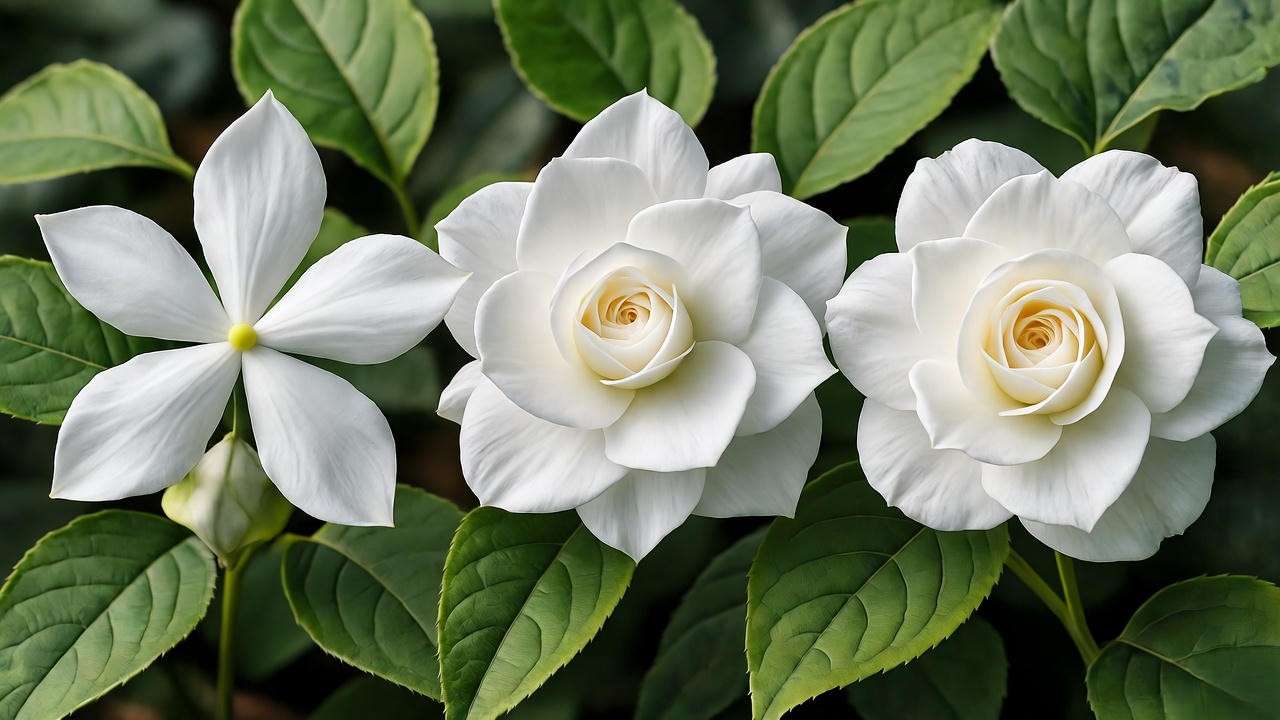
H3: The Jasmine Family Tree (Why Sambac is Special):
The term “jasmine” is widely misused, often leading to confusion. True jasmines belong to the genus Jasminum. It’s vital to distinguish the Sambac Jasmine (Jasminum sambac) from common winter jasmine (Jasminum nudiflorum) and the highly toxic, yet similarly named, false jasmine (Gelsemium). The Sambac is unique because it is one of the few true jasmines known for its intense, sweet fragrance, and its ability to bloom almost continuously during warm periods, often earning it the moniker of night-blooming jasmine (though it blooms day and night). Its waxy, white petals are specifically cultivated for their high concentration of fragrant essential oils.
H3: Popular Sambac Varieties and Their Bloom Habits:
Selecting the right cultivar can dramatically impact your fragrance experience and growth success. Understanding the nuances between varieties is key to expert care.
- Maid of Orleans: This is perhaps the most common variety, featuring single-layered petals. It is a highly vigorous and continuous bloomer, making it the primary choice for those harvesting flowers for traditional jasmine tea. It requires the least specialized care to produce flowers and is often the easiest to grow indoors.
- Belle of India: Distinguished by its elongated, semi-double petals. This variety offers a higher concentration of scent due to its more complex structure and is often preferred for making garlands and essential oil extraction. Its growth habit is slightly more vining than ‘Maid of Orleans’ and benefits from light trellising.
- Grand Duke of Tuscany: The undisputed king of the Sambac family. It produces multi-layered, rose-like blooms that are visually stunning and possess the highest fragrance intensity. While slower to grow and slightly fussier than its cousins (requiring precise watering and fertilization), the reward of its dense, exquisite flowers is unmatched, often commanding the highest price in the market.
H3: Ideal Environment and Hardiness Zones:
The Sambac Jasmine Plant is strictly a tropical and subtropical species, flourishing in USDA Hardiness Zones 9 through 11 when planted outdoors. In these zones, it benefits from high humidity and stable warm temperatures (70°F to 90°F). For gardeners in cooler climates (Zones 8 and below), controlled indoor conditions are a necessity. Treat it as a container plant that must be brought inside before temperatures drop below 50°F (10°C). Failing to protect it from frost or prolonged cold periods is a death sentence for this delicate tropical beauty.
2. The Trifecta of Thriving: Light, Soil, and Water 💧
These three elements form the foundation of successful Sambac jasmine care. Skimping on any one of them will immediately result in reduced vigor and, most importantly, inhibited flowering. Think of this trifecta as the environmental inputs that determine 80% of your plant’s success.
H3: Sunlight Requirements: The Fragrance Catalyst:
The biggest mistake new growers make is providing insufficient light. Your Sambac Jasmine Plant is a sun-demanding specimen.
- Minimum vs. Optimal: While the plant can survive in bright, indirect light, to achieve optimal blooming and peak fragrance, it absolutely requires a minimum of six hours of direct, unfiltered sunlight daily during the active growing season (spring through fall). Think of sunlight as the energy source it uses to produce the complex oils that create its signature scent. Less sun equals less fragrance intensity.
- Expert Tip: If growing outdoors or near a window, rotate the plant weekly. This simple action prevents the plant from becoming leggy (reaching for the light) and directs energy evenly across all stems, promoting balanced, bushier growth and encouraging uniform bud formation on all sides.
- Indoor Solutions: If you are growing the plant indoors, especially during the short winter days, invest in a full-spectrum LED grow light with a high Photosynthetic Photon Flux Density (PPFD) rating. Position it 12-18 inches above the foliage and keep it on for 12-14 hours a day to mimic the intense tropical light needed for flowering.
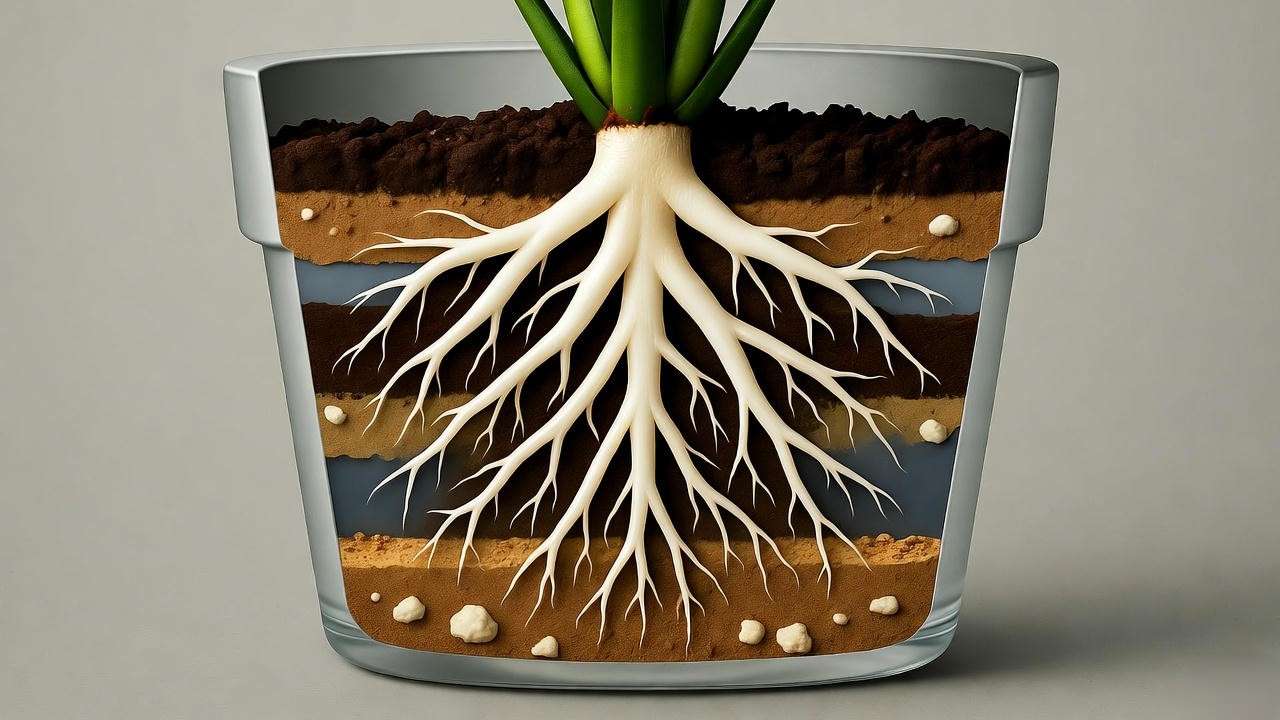
H3: Perfect Potting Mix: Drainage is Non-Negotiable:
Sambac Jasmine hates “wet feet.” Poor drainage is the fastest route to root rot and plant death, even faster than neglect.
- The pH Sweet Spot: Your Sambac Jasmine Plant is an acid-loving plant, thriving best in soil that is slightly acidic to neutral, typically ranging from a pH of 6.0 to 7.0. Using soil that is too alkaline (pH > 7.5) will lock up essential micronutrients, leading to deficiencies like iron chlorosis.
- The Ideal Blend: Create a well-draining, airy mix. A blend of high-quality, moisture-retentive, yet fast-draining ingredients is key. We recommend:
- 1 part standard peat-based potting soil
- 1 part peat moss or coco coir (for slight acidity and moisture retention)
- 1 part perlite, coarse sand, or bark chips (for superior aeration and rapid drainage)
- Ensure the container has multiple drainage holes that are not clogged. Never let the pot sit in a saucer of standing water for more than 30 minutes.
H3: Watering Wisdom: Keeping Roots Happy:
Consistent, correct watering is a balancing act—too much or too little can stress the plant and halt flower production. Overwatering is the most common cause of failure.
- The “Knuckle Test”: Forget rigid schedules and water based on the plant’s need. Use your index finger and insert it up to your second knuckle (about 1-2 inches) into the soil. Water thoroughly only when the top inch or two is dry to the touch. When you do water, soak the entire root ball until water flows freely from the drainage holes.
- Seasonal Adjustments: This is crucial. During the active growing season (late spring to early fall), the plant may need watering every few days, especially if it’s outside in the heat. However, during winter dormancy (Section 7), you must significantly reduce the watering frequency to only once every 10-14 days to keep the soil barely moist, preventing root rot and encouraging the necessary rest period.
- Water Quality: If you live in an area with hard water or highly chlorinated tap water, consider collecting rainwater or letting tap water sit out overnight to allow chlorine to dissipate. Excessive mineral buildup can subtly alter the soil pH over time, impeding nutrient uptake.
3. The Secret Recipe: Fertilizing for Non-Stop Bloom Cycles ✨
This is the phase where expert care truly distinguishes itself from basic maintenance. You must transition your plant from growth mode to flowering mode using targeted nutrition. This section is key to achieving that signature scent intensity.
H3: NPK Ratios for Flowering:
The goal is to provide nutrients that support intense flowering rather than just vegetative (leafy) growth.
- The Golden Rule: The secret to non-stop bloom cycles is using a fertilizer with a lower first number (Nitrogen – N) and significantly higher second and third numbers (Phosphorus – P and Potassium – K). Look for ratios such as a dedicated bloom booster like 7-9-5, 10-15-10, or a classic ‘high-P’ formula.
- The Nitrogen Trap: Excess nitrogen (a high first number, like 20-5-5) is great for lawns and foliage plants, but it is the number one enemy of prolific jasmine flowering. Excess N signals the plant to produce abundant, lush, green leaves at the expense of energy needed for bud and bloom formation. By reducing N and boosting P (for flower development) and K (for overall plant health and stress resistance), you strategically force the plant to divert its energy into setting buds.
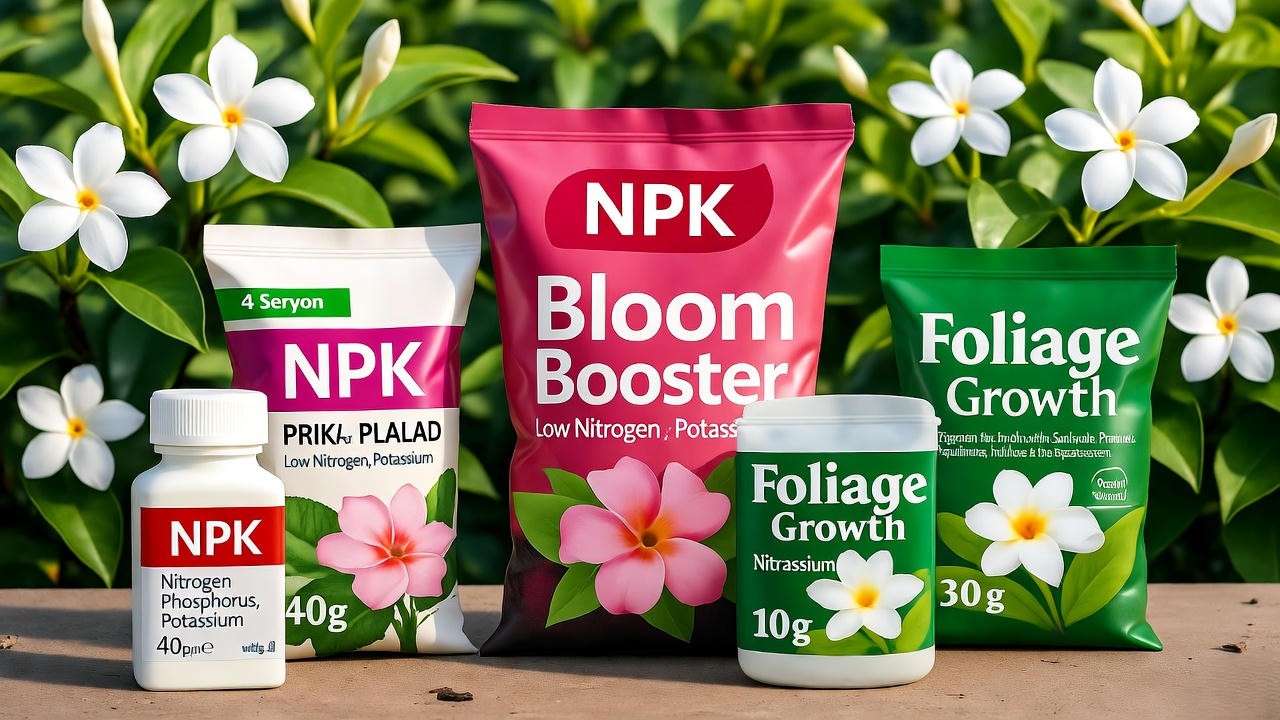
H3: Essential Micronutrients (The Missing Link):
While NPK gets the most attention, deficiencies in trace minerals are often the subtle cause of poor health and reduced fragrance intensity in the Sambac Jasmine Plant.
- Detailing the importance of trace minerals like Iron, Magnesium, and Manganese. A deficiency in Iron or Magnesium typically presents as chlorosis: the leaves turn yellow while the veins remain green. These micronutrients are essential co-factors that support photosynthesis and the complex chemical reactions required for robust flower production and intense, sweet fragrance. Look for fertilizers that contain these elements or supplement with a specific chelated iron or magnesium foliar spray once per month during the growing season if deficiencies are observed.
H3: Timing and Application Techniques:
Consistency and timing are critical for maximizing the effect of your fertilizer.
- When to Feed: Begin feeding your Sambac Jasmine Plant at the start of the active growing season, typically in early spring after the danger of frost has passed or once new growth appears indoors. Continue feeding every 2 to 4 weeks (depending on the product strength) throughout the summer and into early fall. Stop feeding entirely during the winter dormancy period (October/November through February/March) to allow the plant its required rest.
- Fertilizer Types:
- Liquid Feed: The most popular choice, as it provides immediate, measurable nutrition and allows for frequent, targeted application. Always apply to pre-moistened soil to prevent nutrient lockout and root burn.
- Slow-Release Granules: Great for large containers or in-ground plants. Apply once at the beginning of spring; these provide consistent, gentle feeding over several months, reducing the need for constant liquid application.
- Expert Insight Box: Organic Boosters: For an extra layer of health and microbial soil support, consider supplementing with organic fertilizers. Fish emulsion, diluted according to package instructions, provides a gentle nitrogen boost early in the season, while bone meal is an excellent, slow-releasing source of phosphorus. Use these supplementary feeds sparingly—perhaps once per season—to enhance the microbial activity in the soil and support long-term vigor.
4. Pruning Proficiency: Shaping Your Sambac Jasmine for Abundance ✂️
Pruning is often misunderstood as merely a cosmetic task, but for the Sambac Jasmine Plant, it is a powerful tool to manage growth, control shape, and, most critically, force more flowers. Strategic cuts redirect the plant’s energy, encouraging lateral bud break, which means exponentially more fragrant blossoms.
H3: When to Prune: The Post-Bloom Window:
Timing your cuts correctly is essential, as the Jasminum sambac flowers on new growth produced in the current season.
- The Critical Rule: Major pruning must occur immediately after a heavy bloom cycle or at the very end of the active growing season in the late fall/early winter. Never prune heavily in the spring when new growth is just beginning, as you will be cutting off the very wood that would produce the summer’s buds. If you are growing the continuous blooming ‘Maid of Orleans,’ choose a period of relative rest, usually late autumn, for the most significant cuts.
H3: The Two Pruning Techniques:
Mastering these two techniques will help you maintain a manageable, flower-producing shrub.
- Maintenance Pruning (Deadheading & Pinching):
- Deadheading: Regularly removing (pinching off) the spent, faded flowers. This is non-negotiable. It prevents the plant from setting seed and signals it to immediately start producing the next flush of blooms, essentially recycling energy into flowers, not seeds.
- Tip-Pinching: Throughout the active growing season, pinch off the very tip of new, non-flowering stems (just above a leaf node). This forces the stem to branch out laterally, creating two or more new growing points, which ultimately leads to a denser, bushier plant and significantly more potential flowering sites.
- Hard Pruning (Rejuvenation): Every 2 to 3 years, your plant will benefit from a more aggressive haircut. Cut back up to 30% to 50% of the oldest, woody growth. Use sharp, sterilized shears. This rejuvenation pruning removes unproductive, tired stems and encourages new, vigorous growth from the base. This is especially important for maximizing the bloom potential of older, established plants grown in containers.
H3: Creating Structure: Training as a Bush or Trellis Climber:
The Sambac Jasmine Plant naturally has a somewhat sprawling or vining habit, which you can direct for maximum aesthetic benefit.
- Bush/Shrub: Most varieties, especially ‘Grand Duke of Tuscany’ and younger ‘Maid of Orleans,’ are easily maintained as dense, compact shrubs by consistent tip-pinching and yearly hard pruning. This is ideal for containers and small spaces.
- Trellis/Climber: Varieties like ‘Belle of India’ can be trained up a small trellis or support structure. Use soft ties to gently guide the growing tips around the support. Training the branches horizontally also encourages the development of flowering side shoots, boosting your overall flower count.
5. Troubleshooting: Diagnosing and Curing Common Problems 🐛
A healthy, happy Sambac Jasmine Plant is a blooming plant. If your jasmine is struggling, it’s often a sign that one of its core environmental needs is unmet. Becoming an expert grower means being an expert diagnostician who knows how to quickly rectify the issue.
H3: The 3 Main Reasons for Zero Blooms (The Expert Checklist):
Before you blame genetics, check these three common environmental failures. This list addresses nearly 90% of all non-flowering issues:
- Insufficient Light (The Energy Crisis): Is your plant truly getting 6+ hours of direct sun? If it’s behind a window that filters the light, or if surrounding trees have leafed out, the light may be too weak. Solution: Move the plant to the brightest spot or supplement with a grow light (refer to Section 2).
- Wrong Fertilizer Ratio (The Nitrogen Trap): Are you using a fertilizer formulated for leafy growth (e.g., houseplant food)? Excess nitrogen is a flowering inhibitor, causing growth without flowers. Solution: Switch immediately to a high-Phosphorus bloom booster and flush the soil with clean water to leach out excess nitrogen.
- Lack of Cold/Rest Period (The Tropical Rest): If your jasmine has been kept in constant warmth (75°F+) year-round, it may never enter the necessary dormancy cycle required to set buds. Solution: Transition the plant to a cooler (50-65°F) environment for 6-8 weeks in winter and cut back water drastically (see Section 7).
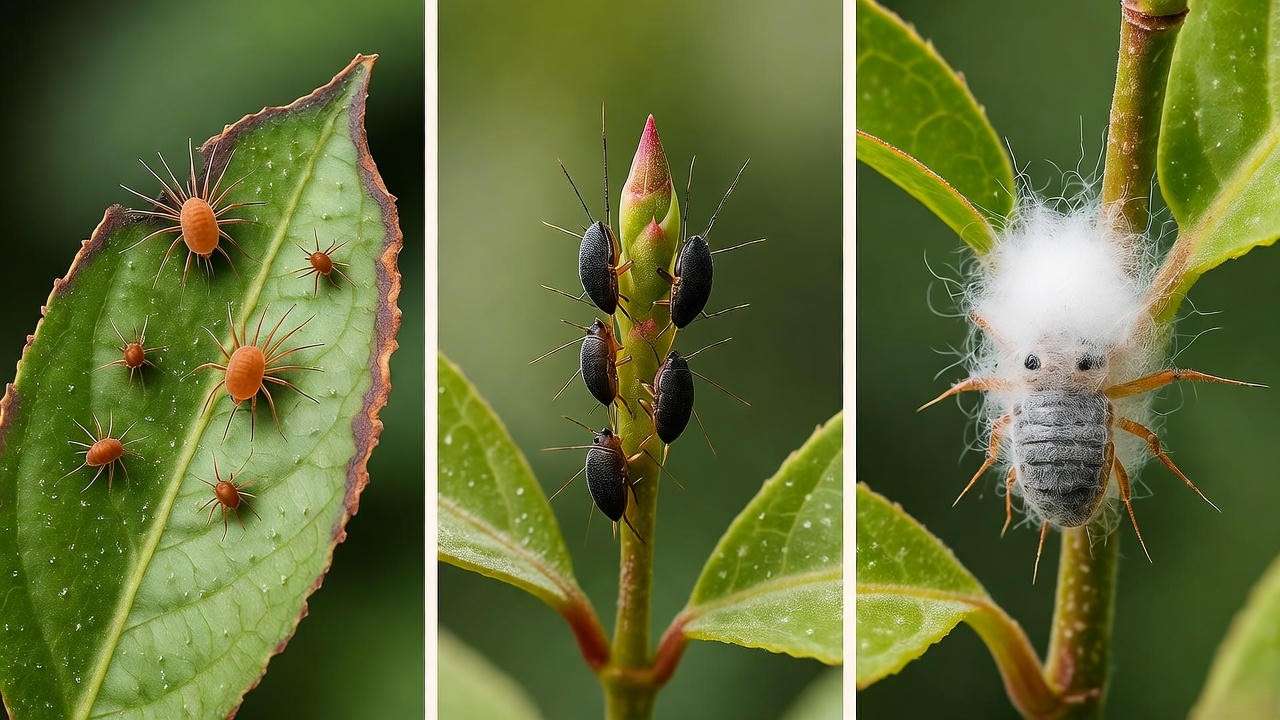
H3: Pest Patrol: Identifying and Treating Threat Actors:
Pests love tropical plants, especially when they are grown indoors in dry air. Regular inspection is your best defense.
- Spider Mites & Aphids:
- Identification: Spider mites create fine webbing, usually on the underside of leaves and branch junctions; aphids are tiny green or black soft-bodied insects clustering on new, tender growth tips.
- Immediate Treatment: Isolate the plant. Treat immediately and aggressively with Neem oil spray (a natural, organic insecticide) or insecticidal soap, ensuring complete coverage of the tops and bottoms of all leaves. Repeat the treatment every 5-7 days until the infestation is gone.
- Mealybugs:
- Identification: Look like small white, cottony masses, typically hiding in leaf axils, along stems, and in crevices.
- Immediate Treatment: These require manual effort. Dip a cotton swab or small brush into rubbing alcohol (70% isopropyl is fine) and touch each mealybug mass directly. The alcohol will dissolve their waxy coating. Follow up with a full Neem oil spray.
H3: Fungal Fights: Root Rot and Leaf Spot Prevention:
Fungal diseases are almost always a symptom of environmental issues—specifically, poor air circulation and excessive moisture.
- Root Rot: The classic sign is yellowing, dropping leaves, and mushy, dark roots. This is caused by consistently soggy soil. Prevention is key: always use a highly porous soil mix and adhere strictly to the “Knuckle Test” for watering. If rot is severe, repot into fresh, dry soil after trimming away the affected roots and treating with a fungicide.
- Leaf Spot: Appears as small, brown or black spots on the leaves. This is usually due to high humidity combined with poor air movement. Increase air circulation immediately (use a small fan indoors) and reduce overhead watering to keep the foliage dry.
6. Expanding Your Collection: Simple Propagation Methods 🪴
Propagating your existing Sambac Jasmine Plant is a rewarding way to expand your fragrant collection and is a testament to your growing expertise. This method focuses on stem cuttings, the most reliable approach for home gardeners.
H3: Success with Stem Cuttings:
- Step-by-Step Guide:
- Selection: Choose a piece of semi-hardwood cutting—a stem that is firm but still slightly flexible, not brand-new green growth, and not old woody growth. The ideal cutting length is 4 to 6 inches, taken from a healthy, non-flowering shoot.
- Preparation: Remove all leaves except for the top two sets. Dip the cut end into rooting hormone powder (this significantly increases success rates).
- Media: Plant the cutting in a sterile, well-draining medium, such as a 50/50 mix of perlite and peat moss. This mix prevents rot while encouraging rapid root development.
- Environment: Place the cutting in a highly humid environment (a clear plastic bag secured over the pot creates a mini-greenhouse) in a warm location with bright, indirect light. Roots typically form in 4-8 weeks.
- Media Choice: While some try water rooting, direct planting in a well-aerated medium using rooting hormone provides the strongest, fastest root development.
H3: Air Layering (Marcotting): A Faster Path to Mature Plants:
For the more adventurous expert, air layering (or marcotting) offers a method to produce a large, mature plant much faster than a small cutting. This technique involves slightly wounding a section of a woody stem, wrapping it in moist sphagnum moss and plastic, and inducing roots to grow directly on that selected stem while it is still attached to the parent plant. Once robust roots have formed (usually 2-3 months), the rooted stem is severed and planted, giving you a substantial, blooming-sized jasmine in a short time.
7. Year-Round Care and Winter Dormancy Strategies ❄️
For the non-tropical gardener, mastering the winter transition is the single most important factor in guaranteeing a spectacular bloom display the following season. The Sambac Jasmine Plant needs a rest—this is a critical step often missed in general plant care advice.
H3: The Necessity of Dormancy (Why it Needs a Chill):
Unlike many evergreen houseplants, Jasminum sambac requires a period of cool, relative stress to regulate its hormones. This short period of rest, known as vernalization or dormancy, is essential for setting flower buds for the next active growing cycle. Without this chill period, the plant often continues to grow slowly but will produce very few (if any) flowers—a phenomenon known as perpetual growth stunting.
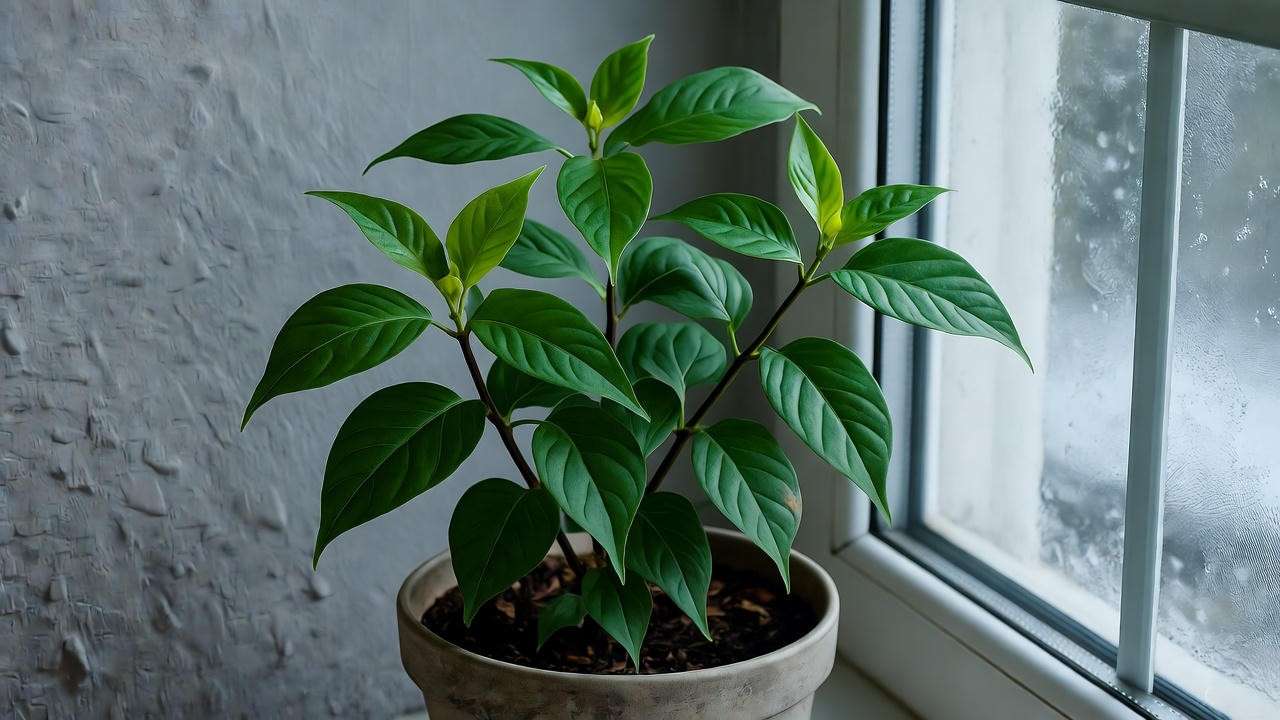
H3: Overwintering Your Sambac Jasmine Indoors:
- Ideal Winter Conditions: Move your plant indoors well before the first frost. The ideal spot for its rest period should be cool, but not freezing, maintaining temperatures consistently between 50°F and 65°F (10°C to 18°C). An unheated garage, cool spare room, or an insulated porch works perfectly.
- The Light/Water Shift: This is where the care routine drastically changes for 6-8 weeks.
- Water: Drastically cut back on watering, allowing the soil to dry out almost completely between deep drinks. The plant is barely metabolizing, so excess water leads to root rot.
- Light: If the plant is in its 50-60°F cool room, it needs minimal light. If it stays in your heated living space, it will still need its 6+ hours of grow light, but the required light intensity is lower than in the summer. Crucially, stop feeding entirely.
H3: Spring Awakening:
Around late February or early March, when you see the first signs of tiny new growth, you can initiate the spring awakening:
- Move: Transition the plant back to its brightest, sunniest summer location (or ramp up the grow lights).
- Water: Gradually increase the watering frequency back to the “Knuckle Test” rule.
- Fertilize: Wait until you see 2-3 inches of active new growth before applying the first dose of your high-Phosphorus fertilizer (Section 3). This timing ensures the plant is ready to convert that energy directly into bud production.
8. Sambac Jasmine Plant FAQs & Reader-Driven Expert Tips 💬
We’ve compiled answers to the most common questions that arise when cultivating the Sambac Jasmine Plant to ensure you have quick, actionable solutions at your fingertips.
H3: Quickfire Answers:
- Is Sambac Jasmine safe for pets? Yes! Unlike some ornamental plants called “jasmine” (like Gelsemium), the true Jasminum sambac is generally considered non-toxic to cats and dogs. However, always discourage pets from ingesting plant material.
- How long until my cutting blooms? A small cutting or young nursery start typically requires 1 to 2 years of strong growth before it is mature enough to sustain heavy, continuous flowering. Be patient and focus on establishing a strong root system first.
- Why are the leaves turning yellow but the veins are green? This classic symptom is almost always indicative of iron deficiency (chlorosis). In a Sambac jasmine, this is frequently not due to a lack of iron in the soil, but rather the inability of the plant to absorb it because the soil pH has become too alkaline (above 7.0). Solution: Treat with an application of chelated iron and consider using a slightly acidic fertilizer or soil amendment to gradually lower the pH.
- Can I grow it permanently in a small pot? While you can, the plant will become root-bound and flower production will diminish. It requires yearly repotting to a slightly larger size (until it reaches a manageable final size) and a strict regimen of hard pruning every 2-3 years to refresh the root system.
- Bonus Expert Tip: Humidity Control: The Sambac Jasmine Plant is tropical and thrives in high humidity (50-60%+). Low indoor humidity, especially during winter, not only stresses the leaves but is the biggest contributing factor to Spider Mite infestations. Mist the leaves daily, use a pebble tray, or place a small humidifier near your plant to create a microclimate that deters pests and keeps the foliage vibrant.
Conclusion: Embrace the Fragrance Journey 🏆
The intense, captivating fragrance of the Sambac Jasmine Plant is a reward earned through precise, attentive care. By moving beyond simple watering and adopting this expert regimen—ensuring maximum direct sunlight, utilizing a high-Phosphorus, low-Nitrogen fertilizer, and committing to strategic pruning and winter dormancy—you transform your plant from a mere survivor into an undeniable spectacle of fragrance. This journey requires commitment, but the sight and scent of your flourishing Mogra in full, abundant bloom is a breathtaking experience that confirms your status as a masterful gardener.
Now that you have the secrets, the most rewarding part begins: putting this knowledge into practice. We love hearing about your success.
We invite you to share your journey! Let us know what variety of Sambac Jasmine you are growing and what pruning or fertilization secrets have worked best for you in the comments below!

